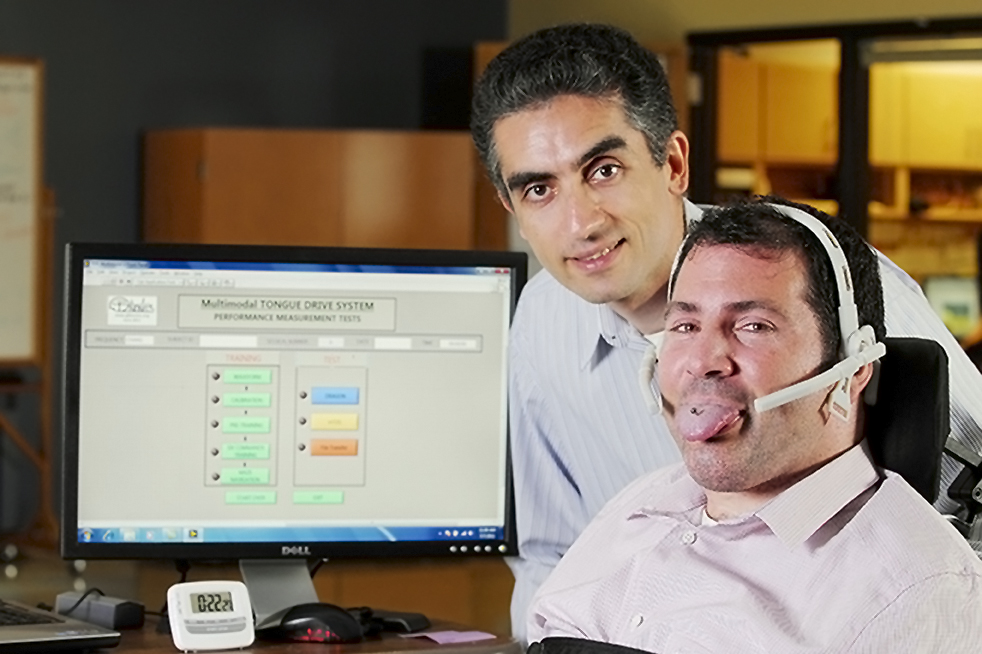Better movement with just a flick of the tongue? One Tech professor has been able to make the daily lives of patients with paralysis a lot easier.
Mobility plays a vital role in the everyday lives of students at Tech, from getting out of bed to taking the bus and trolley system to get to classes. Yet most times, we tend to overlook how much different our lives would be if suddenly, our ability to be mobile were taken away from us.
About 10,000 people a year in the U.S. alone receive spinal cord injuries, causing partial or almost total paralysis, causing drastic life changes for those injured.
Maysam Ghovanloo, an ECE assistant professor, has helped create a revolutionary operating system for patients with paralysis that he believes will lead to individuals not only being able to operate wheelchairs more effectively, but also to do other tasks that were previously daunting or impossible without assistance from other people.
The system, known as Tongue Drive, has patients receive magnetic piercings on their tongues, which will be used to operate as the guide for where they want their wheelchair to move to.
“As the tongue moves, we can sense the change in the magnetic field,” Ghovanloo told Georgia Tech Research News reporters. “And then, our headset has a wireless connection to a smartphone that is worn by the user. It can detect where, and in what direction, and at what location the tongue and this tiny magnet is, and execute that command by sending the proper signal to the wheelchair to follow.
The tongue monitor has a precise location on the tongue so that when a person speaks, the wheelchair will not recognize the speech as a command to move. Additionally, the user can turn the magnet on and off when it is time to eat or drink.
Setbacks for the technology begin immediately in that some users are hesitant in wanting to get a piercing on their tongue, but Ghovanloo believes that this is non-issue.
“They have gone through more significant surgeries. This is really laughable to them. This is not an issue,” Ghovanloo said to Washington Post reporters.
Currently, the technology is not slated to be on the market for another year and could cost more than the traditional wheelchair system currently in use by many, yet Ghovanloo will continue in his efforts to perfect the system to ultimately make this system more readily available.
“I have put it as my mission to help these individuals become more independent, not only [to] lower their healthcare costs,” Ghovanloo said to Georgia Tech Research News reporters. “It is beneficial to society, it’s beneficial to their family members and caregivers, but most important of all, it’s beneficial to themselves, because they cannot go back to how they were, but at least I can help them to be more independent and self-sufficient.
